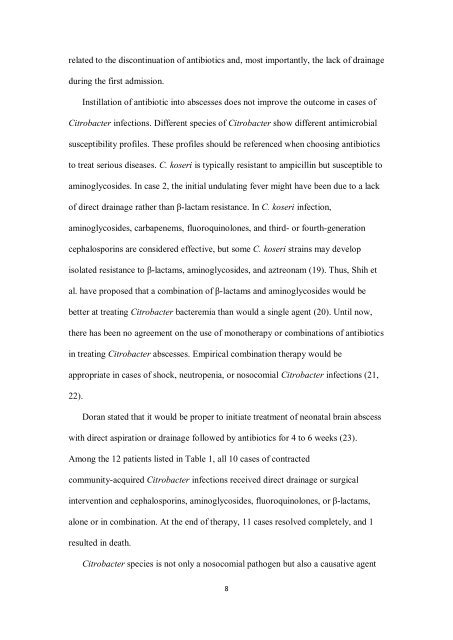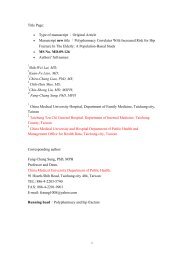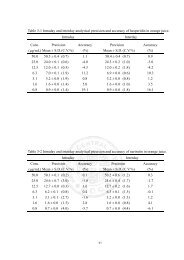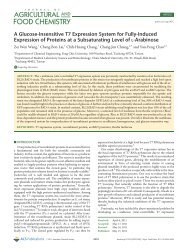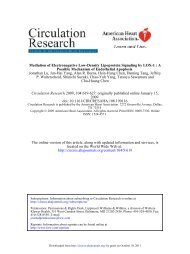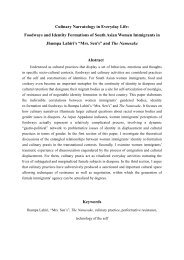Type: Case report Title: Abscess caused by Citrobacter koseri ...
Type: Case report Title: Abscess caused by Citrobacter koseri ...
Type: Case report Title: Abscess caused by Citrobacter koseri ...
You also want an ePaper? Increase the reach of your titles
YUMPU automatically turns print PDFs into web optimized ePapers that Google loves.
elated to the discontinuation of antibiotics and, most importantly, the lack of drainage<br />
during the first admission.<br />
Instillation of antibiotic into abscesses does not improve the outcome in cases of<br />
<strong>Citrobacter</strong> infections. Different species of <strong>Citrobacter</strong> show different antimicrobial<br />
susceptibility profiles. These profiles should be referenced when choosing antibiotics<br />
to treat serious diseases. C. <strong>koseri</strong> is typically resistant to ampicillin but susceptible to<br />
aminoglycosides. In case 2, the initial undulating fever might have been due to a lack<br />
of direct drainage rather than β-lactam resistance. In C. <strong>koseri</strong> infection,<br />
aminoglycosides, carbapenems, fluoroquinolones, and third- or fourth-generation<br />
cephalosporins are considered effective, but some C. <strong>koseri</strong> strains may develop<br />
isolated resistance to β-lactams, aminoglycosides, and aztreonam (19). Thus, Shih et<br />
al. have proposed that a combination of β-lactams and aminoglycosides would be<br />
better at treating <strong>Citrobacter</strong> bacteremia than would a single agent (20). Until now,<br />
there has been no agreement on the use of monotherapy or combinations of antibiotics<br />
in treating <strong>Citrobacter</strong> abscesses. Empirical combination therapy would be<br />
appropriate in cases of shock, neutropenia, or nosocomial <strong>Citrobacter</strong> infections (21,<br />
22).<br />
Doran stated that it would be proper to initiate treatment of neonatal brain abscess<br />
with direct aspiration or drainage followed <strong>by</strong> antibiotics for 4 to 6 weeks (23).<br />
Among the 12 patients listed in Table 1, all 10 cases of contracted<br />
community-acquired <strong>Citrobacter</strong> infections received direct drainage or surgical<br />
intervention and cephalosporins, aminoglycosides, fluoroquinolones, or β-lactams,<br />
alone or in combination. At the end of therapy, 11 cases resolved completely, and 1<br />
resulted in death.<br />
<strong>Citrobacter</strong> species is not only a nosocomial pathogen but also a causative agent<br />
8


